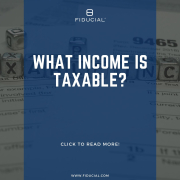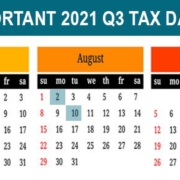PREMIUM ASSISTANCE CREDIT – THE HEALTH INSURANCE SUBSIDY FOR LOWER INCOME INDIVIDUALS AND FAMILIES
Beginning in 2014, as part of the Patient Protection and Affordable Health Care Acts, all U.S. persons, with certain exceptions, must have minimal essential health care coverage or face a tax penalty.
Recognizing this requirement could present a serious financial problem for lower-income individuals and families who do not have employer-provided coverage or other forms of insurance, Congress included a tax credit in the law to help them pay for their insurance.
The amount of the tax credit, known as the Premium Assistance Credit, is based on the individual or family’s income as it compares to the Federal poverty guidelines. Those with household income at 100% of the poverty level get the largest credit, and the credit is reduced for higher incomes and completely phased out when the income reaches 400% of the poverty level. You might be wondering why those with income under 100% of the poverty level do not qualify for the credit; they qualify for Medicaid.
The credit is refundable and computed on the tax return for the year. However, that means the credit will not be available until the tax return is filed in the following year. Understanding this problem, Congress allows an advanced insurance premium subsidy to reduce the insurance premiums. Then, the advanced subsidy and premium assistance credit are reconciled on the tax return and any excess credit is refunded (if other taxes aren’t owed), or some portion of the subsidy in excess of the credit is repaid.
To qualify for the premium assistance credit, the insurance must be purchased through the state’s American Health Benefit Exchange or, if the state does not have an insurance exchange, the federal exchange. In addition, to qualify for the credit the taxpayer:
- Cannot be claimed as a dependent by another person;
- Cannot be eligible for Medicaid, Medicare, employer-sponsored insurance, or other acceptable types of coverage;
- If married, must file a joint tax return; and
- Cannot be offered minimum essential coverage under an employer-sponsored plan. An individual is eligible for employer-sponsored minimum essential coverage only if the employee’s share of premiums is “affordable” and the coverage provides “minimum value.”
When determining family size for computing this credit, the family size is the same as the number of individuals for whom the taxpayer is allowed an exemption deduction for the tax year.
The term household income includes the modified adjusted gross income (MAGI) of the taxpayer plus the sum of MAGIs of all individuals who were taken into account when determining the taxpayer’s family size and who were required to file a tax return.
The term MAGI for purposes of this credit means adjusted gross income increased by any foreign earned income exclusion, the excluded portion of Social Security and Railroad Retirement benefits, and tax-exempt interest income.
Insurance through the exchanges will be effective January 1, 2014. Exchanges will be accepting applications in the fall in preparation for the January 2014 effective date.
It is not too early to begin planning for 2014 and these new requirements. Please call this office with questions.








Leave a Reply
Want to join the discussion?Feel free to contribute!